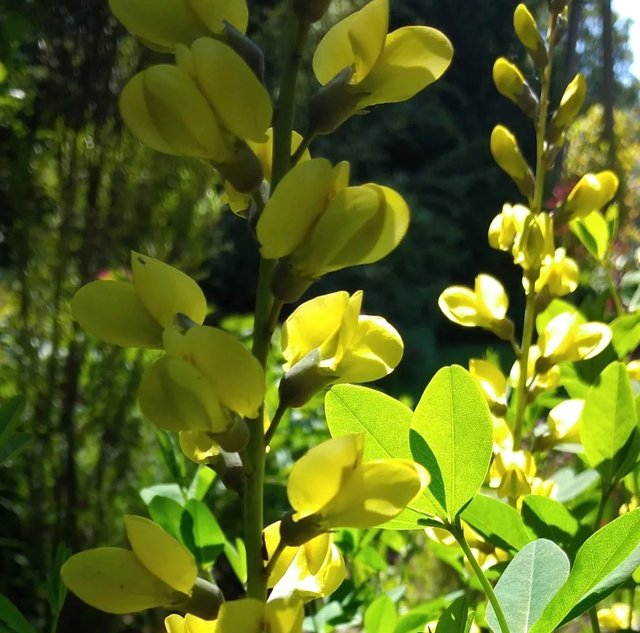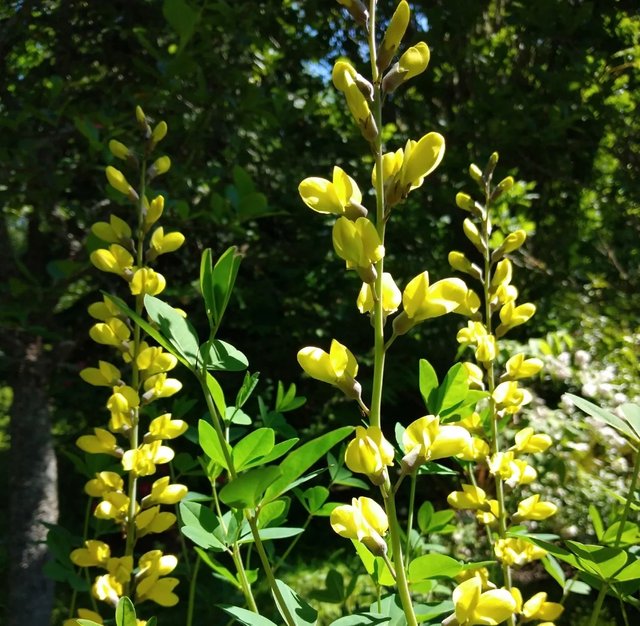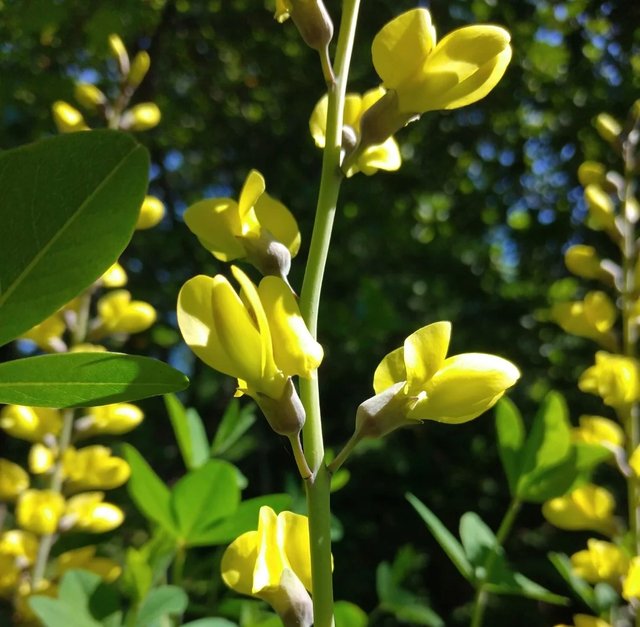



Baptisia tinctoria, commonly known as wild indigo, yellow false indigo, or horsefly weed, is a perennial herbaceous plant native to the eastern United States.This understated yet resilient plant has fascinated botanists, herbalists, and gardeners alike for centuries. Its name “tinctoria” hints at one of its historical uses—as a dye plant—yet its story goes far beyond pigmentation.
Unlike some of its showier Baptisia cousins like Baptisia australis (blue wild indigo), B. tinctoria tends to be more compact with finely dissected, almost fern-like foliage and a shrubby growth habit. It thrives in dry, sandy, or rocky soils and full sun, making it an excellent choice for xeriscaping and native plant gardens.It attracts bees, butterflies, and other native pollinators, especially bumblebees which are strong enough to access its tough pea flowers.
It serves as a larval host for several species of butterflies and moths, including the wild indigo duskywing.As a legume, it has a symbiotic relationship with nitrogen-fixing bacteria in its root nodules, helping to enrich the soil.Its adaptability to poor soils and drought conditions make it a pioneer species in ecological restoration projects, especially on degraded lands.Baptisia tinctoria is more than just a wildflower—it's a survivor, a healer, a pollinator magnet, and a symbol of botanical heritage. Though less flashy than some cultivated garden plants, its resilience, ecological contributions, and rich historical uses make it a worthy addition to any nature-conscious gardener’s landscape.
